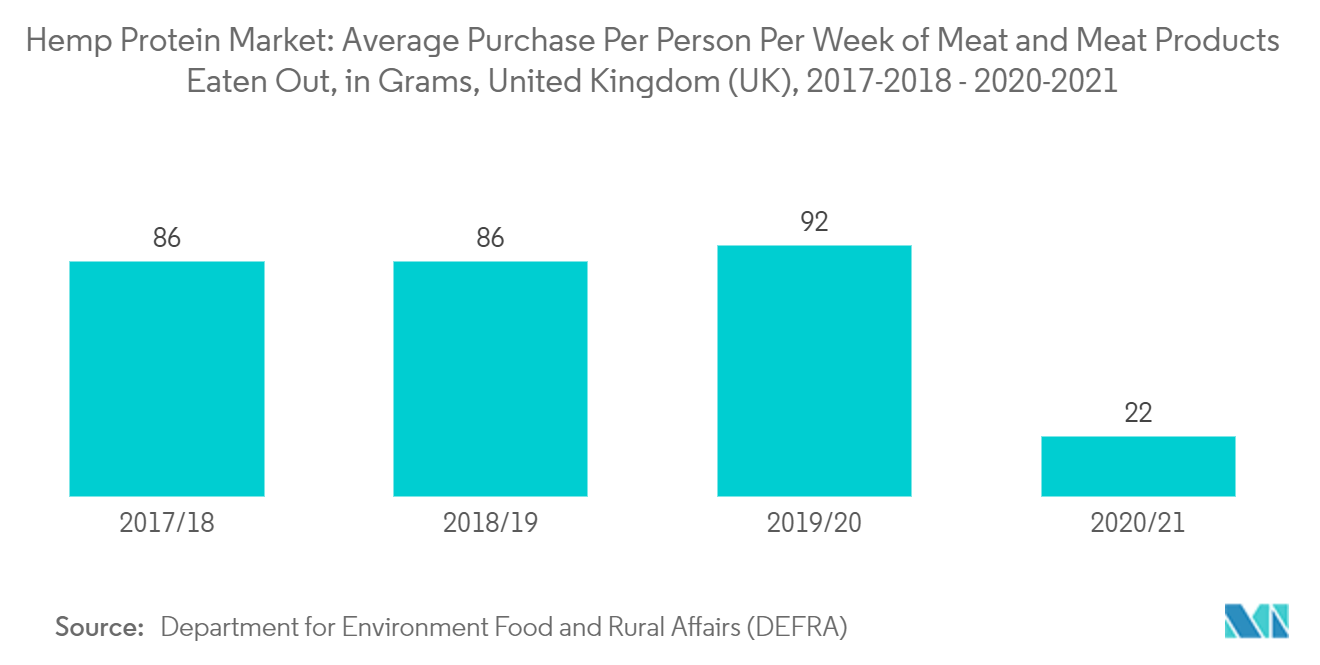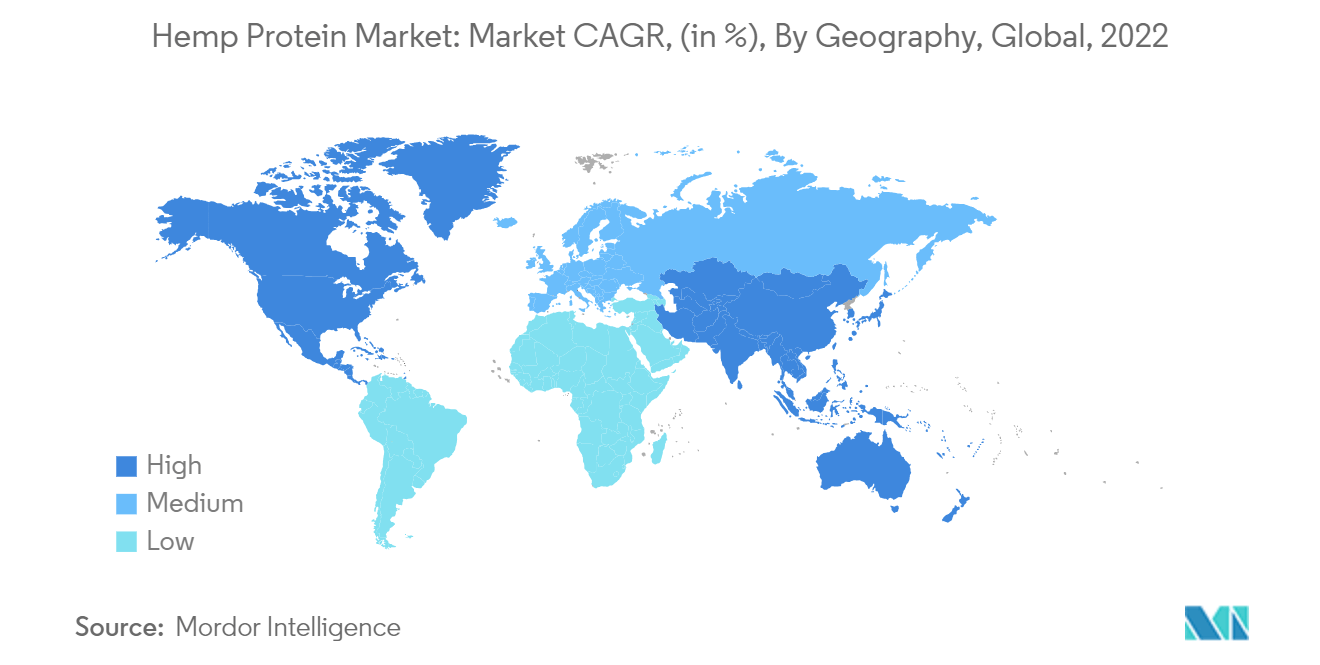Market Trends of Hemp Protein Industry
Rising Preference for Plant-Based Protein
- With more focus on the particular forms of protein consumed, consumer interest in increasing protein intake is rising majorly owing to the increasing need for protein as a food-nutritional component. The high-protein diet trend is taking off and is expected to keep driving people's appetites in the future years.
- Similarly, the emergence of vegetable protein from sources like hemp demonstrates a change in customer demand from animal protein to plant protein with similar functional and nutritional characteristics. This incremental shift toward a plant-based diet is primarily influenced by various factors, including ecological concerns, health consciousness, ethical or religious beliefs, and environmental and animal rights. This combination of increasing need for protein consumption and rising demand for plant-based protein sources is expected to benefit the market's growth globally during the forecast period.
- Additionally, with growing health concerns due to meat consumption, consumers are inclined toward lowering meat consumption and incorporating plant-based protein sources into their diets, thus driving the market's growth, for instance, according to the GOV.UK, in 2020/2021, an average of 22 grams of meat and meat products were consumed per person per week, which has seen a significant low when compared to the previous year. In 2019/2020, an average of 92 grams of meat and meat products were consumed per person per week.
- Moreover, hemp protein is receiving more attention due to consumer demands for clear labeling, simple digestion, the need or desire to avoid allergens, compatibility with vegetarian and vegan diets, and concerns about sustainability. This increasing demand for hemp protein in times of growing consumption of plant protein sources is expected to boost the market's growth.
- Furthermore, companies are launching new products that may meet consumer needs in the market as a result of the growing preference for plant-based protein products, which will increase the industry's sales of hemp protein in the upcoming years.

North America is a Major Market for Hemp Protein
- The hemp protein market has been growing across North America, owing to various factors such as an inclination toward plant protein, increasing fitness trends, growing health and nutrition awareness, food allergies and intolerances, and other such reasons. Additionally, the growing awareness among consumers regarding the health benefits of hemp protein has been driving the demand for hemp protein products.
- Hence, many manufacturers have come forward with hemp protein product innovations, in turn driving the demand for hemp protein ingredients across the region. With its nutty flavor, this nutrient-dense ingredient is being adapted into a wide range of food and beverage innovations in the region, catering to the evolving preferences of consumers.
- Hemp flour can replace the regular, unhealthy maida; nutty in flavor, hemp hearts can be used in making milk, gravies, sweets, and patties; and hemp seed oil can be used in dressings and sauces.
- With this wide range of application capabilities and various restaurants and businesses adopting hemp as their major ingredient, players operating in the regional market are focused on offering new hemp protein ingredients with multiple application capabilities to cater to a wide range of businesses.
- For instance, in June 2022, Applied Food Sciences (AFS), a Texas-based company, introduced PurHP-75TM, a hemp seed protein component. The ingredient's organic component was asserted to be derived from hemp hearts, which have 75% protein and provide all nine essential amino acids. Such factors, supported by the growing health consciousness and inclination toward plant-based food among consumers in the region, are expected to boost the market's growth in the region.


